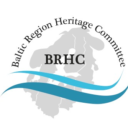Coastal Heritage
About us
The countries surrounding the Baltic Sea have been connected by waterways throughout history. The Baltic Sea water basin compose a cultural region where we share similar maritime heritage and coastal traditions, essential for understanding our common identity and history.
What, you may ask, do we mean by the concept “coastal heritage”? Briefly and in a broad sense, coastal heritage encloses the entire range of maritime landscape, comprising the economies and topography of the whole waterfront area whether they are submerged, in the water, buried or located on land, still in use or disused. Moreover, coastal heritage does not end at visual objects, but it also includes traces of intangible heritage, inherited from the past. In other words, coastal heritage is the total assemblage of things that human beings have done to alter the interface and relationship between land and water. Among most typical features of the coastal heritage can be mentioned ports and harbours, ship- and boatyards, navigational aids, fishing villages, all type of fishing or seafaring constructions, recreational and industrial buildings, constructions and, naturally, ships and boats of all types.
The coastal areas are probably the most rapidly changing environments today. As the traditional trades lose their importance, new economic strategies are called for to build more sustainable uses of our coastal resources. The coastal heritage is threatened not only by crises in the traditional coastal industries, but also by the increasing tourism. The members of the WG Coastal Heritage find it essential to make coastal heritage more visible, and further protected and developed in all its diversity by identifying and describing the common assets, problems, and potentials. The Working Group values and revitalizes coastal and maritime heritage in all of its diversity by exhibitions, publications, inventories and research.
It is important to understand that heritage specialists alone cannot preserve our coastal culture. A positive development is dependent on an active co-operation between different governmental authorities, institutions, and nongovernmental organizations on local, regional, national, and international levels. The care of coastal heritage depends on the existence of the resident population. The objects and places are not, in themselves, what is important but the meanings and uses that people attach to them, and the values they represent, are.
Working group members
Chair of the WG:
Director Espen Frøysland, Norway, [email protected]
Lindesnes Lighthouse Museum
Secretary of the WG:
Senior Advisor Hannu Matikka, Finland, [email protected]
Finnish Heritage Agency
| Director Urmas Dresen, Estonia Estonian Maritime Museum | [email protected] |
| Director Susanne Grigull, Schleswig-Holstein The Flensburg maritime and rum museum | [email protected] |
| Curator Sari Mäenpää, Finland The Maritime Center Forum Marinum | [email protected] |
| Director Robert Domzal, Poland National Maritime Museum, Gdansk | [email protected] |
| Specialist researcher Jagoda Klim, Poland National Maritime Museum, Gdansk | [email protected] |
| I Chief officer Dovilé Furmaniuk, Lithuania Klaipeda territorial division of Department of Cultural Heritage under the Ministry of Culture | [email protected] |
| Intendent Fredrik Blomqvist, Sweden Swedish National Maritime and Transport Museums | [email protected] |
| Curator Jesper Grönholm, Åland Åland Maritime Museum | [email protected] |
Main outcomes
Films
- Film The Baltic – A sea of connections (2016, length 37 minutes) is a description of the voyage of a Norwegian ship that visited eight Baltic Sea countries in the summer of 2016.
Available here - From faering to tankers (Norway, 2016, 12 minutes) presents the old and new boat building and seafaring traditions of the Norwegian coast.
Available here - Architecture of equality (Norway, 2016)
Available here - Lighthouses of Rozewie (Poland, 2016)
Available here - Jurmala Cultural Historic Heritage (Latvia, 2016)
Avaialble here - The Soviet border guards at Saaremaa (Estonia, 2016)
Available here - Finland – Land of treacherous rocks and historic beacons (Finland, 2016)
Available here - Steamers of Stockholm today (Sweden, 2016)
Available here - Who are the volunteers in cultural heritage sector (2022)
Available here - My voyage to the lighthouse (Finland, 2022)
Available here - Back to the river (Poland, 2022)
Available here - The mail rowing race (Sweden and Åland 2022)
Available here - Badewanne diving team (Finland and Estonia, 2022)
Available here - The Friends of Gamle Oksøy (Norway, 2002)
Available here
Publications
- Baltic Seascapes (2016). Activities of Working Group on Coastal Culture and Maritime Heritage of the Baltic Sea States
Available here - Baltic Sea Identity – Common Sea, Common Culture? 1st Cultural Heritage Forum Gdańsk 3rd-6th April 2003 at the Polish Maritime Museum in Gdańsk
Available here
